Apatite
Group name for the minerals fluorine-, chlorine- and hydroxyl-apatite.
Apatite is the reference stone for hardness 5 in Mohs´ scale of hardness.
Apatite shop
Name: greek: απατείν apatein = to deceive
Can be confused with: because of the wide range of colours apatite can be confused with many other minerals. Some blue and green apatites from Madagascar bear a striking resemblance to the famous Paraïba tourmalines
Localities: Very common worldwide. Commercially important sources are Madagascar, India, Sri Lanka, Burma, China, Brazil, Mexico and the USA.
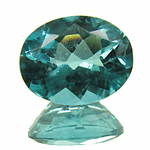
Apatite from Brazil
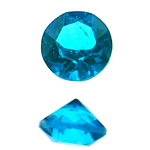
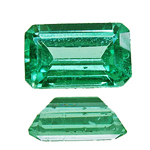
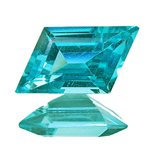
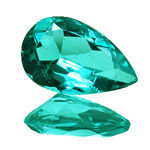
Apatites from Madagascar
Handling: No distinct cleavage but very brittle and sensitive to pressure.
Very sensitive to heat and acids, solder with care!
Do not clean ultrasonically! No galvanic treatment! No borax!
Because of the low hardness and the sensitivity to shock and pressure apatite is not recommended for use as a ringstone.
Apatite is a difficult customer to cut. From experience we reckon it´s chances to survive a lapidary repair job to be below 50%!
Worth knowing: Due to the very attractive colours and the relatively low prices apatite enjoys growing popularity. The colours of light green and blue apatites, in particular, match the colours of the finest Paraïba-tourmalines. If only it weren´t for the low hardness and the high sensitivity…
Apatite shop
Gemmological Properties of Apatite
Chlorine-Apatite: Ca5(PO4)3Cl
Hydroxyl-Apatite: Ca5(PO4)3OH
 Deutsch
Deutsch